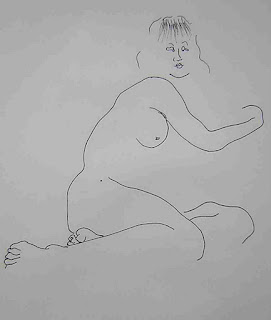I first heard Margaret Stanton speaking about the "Mediterranean diet" about ten years ago, in fact she talked about the "Cretan diet" at an olive oil tasting night here in Hobart. To be truthfully, the spectacle of dozens of tumblers of olive oil waiting to be tasted was a little off putting, but i bravely put put on a good face and much to my surprise I started to understand the complexities of different oils. Olive oil is central to the Cretan Diet and according to various International Health Organization reports suggests that morality from Coronary and Cancer are among the lowest in the world. The Allied Forces at the end of the 2nd World War were surprised to find that the Cretan population were in remarkable shape after being liberated from German occupation. During which time farm animals had been confiscated to feed the troops. How had the Cretan managed to survive in such a healthy state?
The last visit I made to Crete a few years ago, I decided to take a closer look at a few graveyards to check on the longevity rate. One graveyard in Agia Galine Suggested that nearly everyone seemed to live into their 80s' and 90s'. The only ones who didn't make it were fishermen [drowning] or young women who died while giving birth to their off spring. There was also more than a sprinkling of centenarians. What was the secret? It seemed that everything was swimming in olive oil. They consumed little meat, maybe once a week , while the consumption of fish was a little more frequent in coastal villages. Cretans eat much bread wheat or barley, vegetables, pulses, greens and fruit. But , this surprised me they love snails, a cookbook I purchased in Irakleio had some eleven recipes! I had already noticed sacks of snails outside shops and had wondered who bought them.
 |
| View of Agia Galine from the western hillside |
 |
| Aglia Galine Harbour The Cretan partisans were surpplied from these southern harbours and beaches during the second world war. |
According to my landlady at the hotel I was staying at the best way to clean them was to place your snails in a lidded container with corn flour, changing the flour every two days or so until the flour is clean, then they were ready to cook. My cook book suggests the snails be cleaned with a knife removing the membrane covering the orifice. Then put them in water, as the snails are alive they will come out of their shells, make sure you discard any dead ones. Boil in salted water , removing the froth [which is their saliva] , remove any remaining membrane. They are now ready to cook.
When Cretans migrate to western countries like Australia, they often buy fish n' chip shops, hamburger outlets and so on resulting in a dramatic fall in their expected longevity. Whether this is due to stress or the change of diet it can not be said with certainty. But the evidence would suggest that collecting mountain vegetables, reducing meat intake and generally following a Cretan Diet is likely to improve your chances of a long and healthy life. Why not try some snails, I have but my wife thought they were rather textured!
Here is a recipe for snails, there a hundreds of them from all over Crete.
Snails with zucchini and garlic.
[5 to 6 persons]
1 kilo of large snails
1 kilo of zucchini
1 lb. potatoes
2 onions
large cup of olive oil
1 kilo of tomatoes
5 to 6 cloves garlic
salt, pepper.
This is a favourite summer dish all over Crete.















































